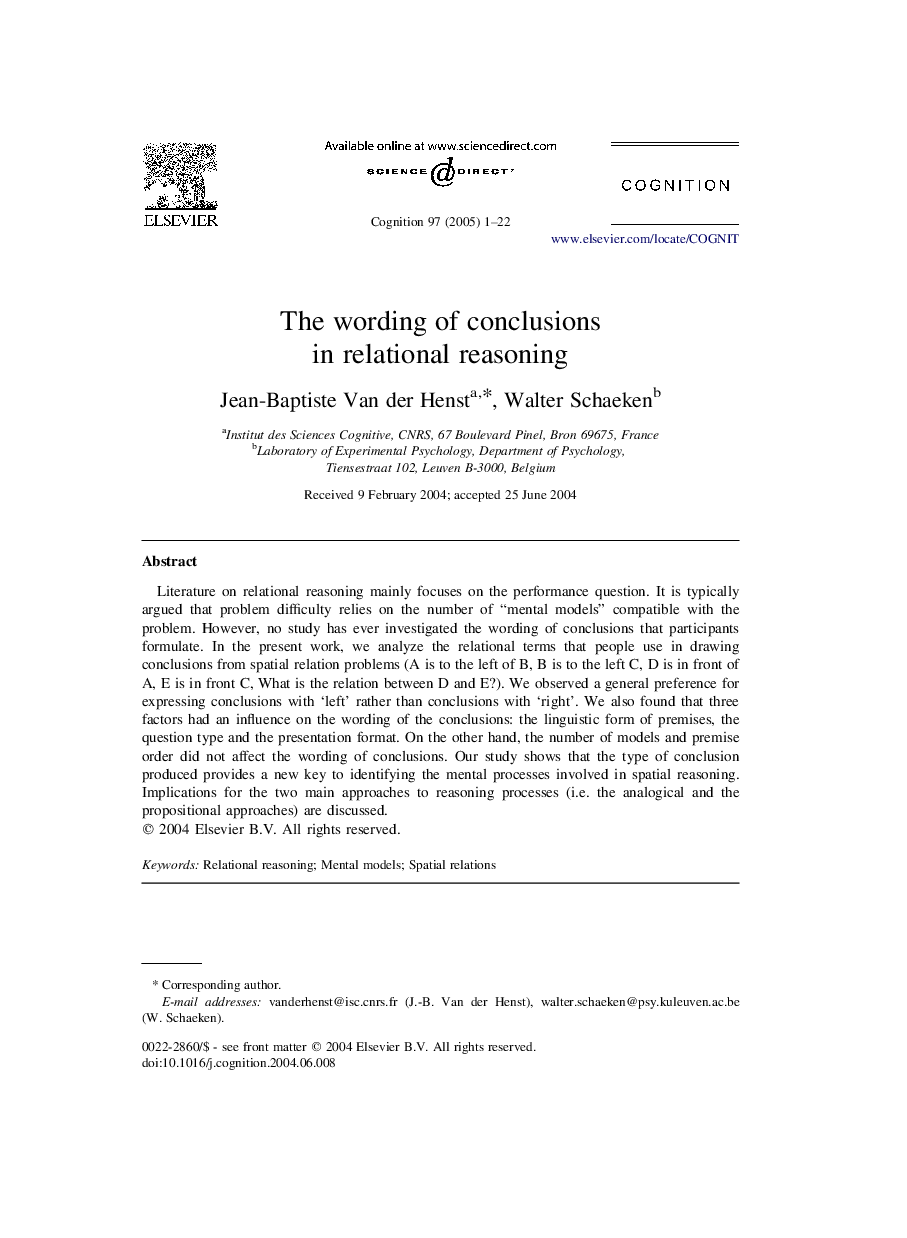| Article ID | Journal | Published Year | Pages | File Type |
|---|---|---|---|---|
| 10458113 | Cognition | 2005 | 22 Pages |
Abstract
Literature on relational reasoning mainly focuses on the performance question. It is typically argued that problem difficulty relies on the number of “mental models” compatible with the problem. However, no study has ever investigated the wording of conclusions that participants formulate. In the present work, we analyze the relational terms that people use in drawing conclusions from spatial relation problems (A is to the left of B, B is to the left C, D is in front of A, E is in front C, What is the relation between D and E?). We observed a general preference for expressing conclusions with 'left' rather than conclusions with 'right'. We also found that three factors had an influence on the wording of the conclusions: the linguistic form of premises, the question type and the presentation format. On the other hand, the number of models and premise order did not affect the wording of conclusions. Our study shows that the type of conclusion produced provides a new key to identifying the mental processes involved in spatial reasoning. Implications for the two main approaches to reasoning processes (i.e. the analogical and the propositional approaches) are discussed.
Related Topics
Life Sciences
Neuroscience
Cognitive Neuroscience
Authors
Jean-Baptiste Van der Henst, Walter Schaeken,
